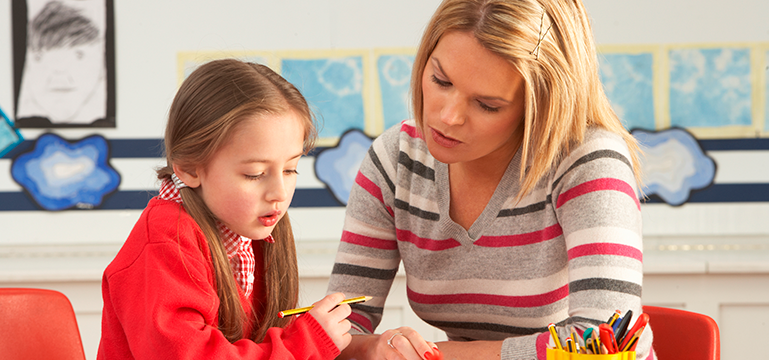Pupils lead their own learning experience

Information about the school
Broughton Primary School is in the town of Broughton in Flintshire. The school has 550 pupils between the ages of 3 and 11, including 76 part-time pupils in the nursery. There are 22 classes at the school including three part time nursery classes. The average proportion of pupils eligible for free school meals over the last three years is around 13%. This is below the national average of 19%. English is the home language for nearly all pupils. The school has identified around 13% of pupils as having additional learning needs, which is below the national average of 21%.
Context and background to the effective or innovative practice
The school motto is, ‘Being the best that we can be”, which is embedded into its context and vision. A culture of improvement permeates the whole school and, together with rigorous planning and excellent working relationships between pupils and adults, helps to achieve excellent standards consistently across the school.
Teachers receive time for planning, preparation and assessment (PPA), which contributes to a high level of co-operation and consistency in the approach to teaching and learning.
Co-operative learning is one of the five core strategies that has been embedded in whole school practice to ensure consistency from nursery to Year 6. It was identified that co-operative learning could be further enhanced by providing valuable opportunities for pupils to influence what they learn on a weekly basis and complement teachers’ planning and provision to ensure high-level pupil engagement and curiosity.
Description of nature of strategy or activity
The leadership team identified that the school’s councils were contributing effectively to school development and that pupil ideas and contribution to learning needed to be extended to every individual, in every class. Foundation phase teachers introduced opportunities where pupils would think about and share their ideas on what activities within the topic they wanted to explore in provision areas. These were recorded and teachers shared these in PPA time to plan shared provisions areas. For example, a collection of old toys was shared with pupils, generating much discussion and questions such as; “Can we make our own toys? What shall we make? what materials could we use? How do they work?” The pupils wanted to create a museum to show their finished toys to other people. They planned the tickets, signs, information leaflets and job roles found in the museum. Through role-play, pupils opened the museum to their parents and relatives and shared the results of their topic.
In Key stage 2, a similar strategy is used. Prior to PPA sessions, teachers collect pupils’ ideas and questions, which are then incorporated into teacher planning. There is a common topic title and skills coverage across the year groups. However, learning experiences in each class are steered by the pupils. Pupils’ ideas are displayed in the classrooms and the answers to questions posed by the pupils become part of their learning journey. Pupils continually evaluate and reflect on the depth of questions. Through this process, pupils lead the direction of their learning and their engagement is high. This supports the tracking and assessment of the questions that pupils pose and contributes to the creation of relevant wall displays to support the learning. The success of pupil voice in posing their own questions led to the development of a “Big Question” poster.
What impact has this work had on provision and learners’ standards?
- Reduced teacher thinking time/ workload
- Increased values to pupil questions
- Pupil engagement enhanced
- Independent thinking skills
- Pupils’ desire to learn improved
- Increased pupil ownership of learning
- Empowerment of pupils
- Greater parental engagement
How have you shared your good practice?
- Pupils have contributed to governing body meetings and shared how they contribute to their learning.
- School to school collaboration has taken place.
- Each class shares pupils’ learning with parents and other pupils in theme weeks and school assembly ‘sharing services’.
Learning walks take place with officers from the GwE consortium, governors and staff from cluster schools.